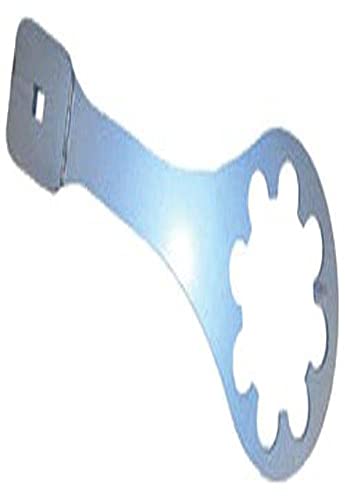If you’re a woodworker or DIY enthusiast, you know the importance of having precise and accurate cuts. One tool that plays a crucial role in achieving accuracy is the table saw. However, even the best table saws can sometimes have issues with their fences, which can affect the accuracy of your cuts.
A table saw fence is an essential component that helps guide the wood being cut, ensuring straight and precise cuts. If your table saw fence is not properly aligned or calibrated, it can lead to inaccuracies in your cuts, resulting in wasted materials and compromised projects. Luckily, there are several steps you can take to make your table saw fence more accurate.
Step 1: Check the Alignment
The first step in improving the accuracy of your table saw fence is to check its alignment. Start by ensuring that the fence is parallel to the saw blade. Use a straightedge or a carpenter’s square to check the alignment at various points along the fence. If you notice any gaps or inconsistencies, you will need to make adjustments. Some table saws have built-in adjustment mechanisms, while others may require manual adjustments.
Tip: Regularly checking and adjusting the alignment of your table saw fence can help maintain accuracy over time.
Step 2: Measure and Adjust
Once you have ensured that the fence is parallel to the blade, the next step is to measure and adjust the distance between the fence and the blade. This distance, also known as the “rip capacity,” should be consistent along the entire length of the fence. Use a measuring tape or a digital caliper to measure the distance at various points. If you notice any variations, you will need to adjust the fence accordingly.
Tip: When making adjustments, make sure to tighten the fence locking mechanism securely to prevent any movement during cuts.
Step 3: Upgrade Your Fence
If you find that your current table saw fence is not providing the accuracy you desire, you may consider upgrading to a more advanced fence system. There are various aftermarket options available that offer enhanced precision and ease of use. These fences often feature micro-adjustment capabilities, allowing for finer adjustments and improved accuracy.
Tip: Do thorough research and read reviews before investing in a new table saw fence to ensure it meets your specific needs and requirements.
By following these steps, you can significantly improve the accuracy of your table saw fence and achieve more precise and consistent cuts. Remember, accuracy is key when working with wood, and a well-calibrated fence is a valuable asset in any woodworking shop.
Ensuring Accuracy in Your Table Saw Fence
Having an accurate table saw fence is essential for obtaining precise and consistent cuts in your woodworking projects. A misaligned fence can result in crooked cuts, wasted materials, and compromised safety. Fortunately, there are some simple steps you can take to ensure that your table saw fence is aligned and accurate.
Check for Parallel Alignment
The first step is to check if your table saw fence is parallel to the saw blade. This can be done by using a measuring tape or a dedicated parallel alignment tool. Start by measuring the distance between the fence and the front and back edges of the saw blade. These distances should be equal for a perfectly aligned fence. If they are not, you will need to make adjustments to bring the fence into parallel alignment.
Adjusting the Fence Alignment
If you find that your table saw fence is not aligned, there are adjustments you can make to correct the issue. Most table saw fences have adjustment screws or bolts that can be used to fine-tune the alignment. Loosen the screws or bolts slightly and gently tap the fence in the desired direction to bring it into alignment with the saw blade. Use a measuring tape to check the alignment after each adjustment until you achieve parallel alignment.
It is important to make small adjustments at a time and check the alignment frequently to avoid over-compensating and ending up with an inaccurate fence. Take your time and be patient with the process.
Using a Featherboard
In addition to aligning the fence, using a featherboard can also help increase the accuracy of your table saw cuts. A featherboard is a device that applies pressure against the workpiece, keeping it firmly against the fence and preventing any wobbling or misalignment during the cut. This can result in cleaner and more precise cuts.
Position the featherboard on the table saw table with the feathered side facing the workpiece. Adjust it so that the feathers are pressing against the workpiece, ensuring a snug fit against the table saw fence. This will help hold the workpiece in place and improve the accuracy of your cuts.
Note: Always remember to follow safety procedures when working with a table saw. Wear appropriate protective gear and make sure the power is turned off before making any adjustments or alignments to your table saw fence.
| Step | Action |
|---|---|
| 1 | Check for parallel alignment between the table saw fence and saw blade. |
| 2 | Make small adjustments using the adjustment screws or bolts on the fence. |
| 3 | Use a measuring tape to check alignment after each adjustment. |
| 4 | Use a featherboard to help improve the accuracy of your cuts. |
| 5 | Always prioritize safety by wearing protective gear and turning off the power before making any adjustments. |
Tips for a More Precise Table Saw Fence
1. Align the Fence Properly: One of the key factors in achieving accuracy with your table saw is ensuring that the fence is aligned correctly. Use a straightedge or a reliable measuring tool to make sure that the fence is parallel to the saw blade.
2. Use a Fence Extension: If the length of your table saw fence is inadequate for the project you are working on, consider using a fence extension. This will provide additional support to your workpiece and improve the accuracy of your cuts.
3. Invest in a High-Quality Fence: Upgrading your table saw fence to a high-quality one can significantly improve the accuracy of your cuts. Look for a fence that is sturdy, easy to adjust, and equipped with measurement scales for precise positioning.
4. Upgrade the Fence Locking Mechanism: A loose fence can lead to inaccurate cuts. If you find that your current fence locking mechanism is not reliable, consider upgrading to a more stable and secure one.
5. Use Featherboards: Featherboards are a useful accessory that can help you maintain consistent pressure against the table saw fence. They prevent the workpiece from moving during cutting, resulting in more accurate cuts.
6. Check the Fence for Deformities: Over time, the fence may become warped or damaged, affecting its accuracy. Regularly inspect your fence for any deformities and address them promptly to maintain precision.
7. Avoid Forceful Pushing: When cutting, avoid pushing the workpiece aggressively against the fence. Instead, apply steady and consistent pressure to maintain control and achieve more accurate cuts.
8. Test Cuts: Before making cuts on valuable or expensive material, practice on scrap wood first. Use these test cuts to fine-tune your equipment, alignment, and technique for optimal accuracy.
By following these tips, you can enhance the accuracy of your table saw fence and achieve more precise cuts in your woodworking projects.
Adjusting Your Table Saw Fence for Better Accuracy
Having an accurate table saw fence is essential for making precise cuts in your woodworking projects. However, over time, your fence may become misaligned and require adjustment. Here are some steps you can take to adjust your table saw fence for better accuracy:
- Check the Alignment: Before making any adjustments, confirm that your table saw fence is misaligned. You can do this by using a straightedge or a square to check if the fence is parallel to the saw blade.
- Loosen the Locking Screws: Most table saw fences have locking screws that hold the fence in place. Loosen these screws to allow the fence to move.
- Adjust the Alignment: Use the adjustment knobs or screws on your table saw fence to make the necessary adjustments. Move the fence closer to or further away from the blade until it is parallel.
- Secure the Fence: Once the fence is aligned correctly, tighten the locking screws to secure it in place. Make sure not to overtighten, as this can cause the fence to shift.
- Test for Accuracy: After securing the fence, make test cuts to ensure that it is now aligned correctly. Measure the width of the cut to see if it matches your desired dimensions.
- Make Fine Adjustments: If the fence is still slightly off, you can make fine adjustments by tapping it gently with a mallet or using shims. This can help you achieve the desired accuracy.
- Maintain Regular Alignment Checks: To prevent future misalignments, it is important to regularly check the alignment of your table saw fence. This will help you catch any issues early and make the necessary adjustments.
By following these steps and regularly maintaining your table saw fence, you can improve the accuracy of your cuts and achieve better results in your woodworking projects.
Tools and Accessories to Improve Table Saw Fence Precision
Having an accurate table saw fence is essential for achieving precise and consistent cuts. Luckily, there are several tools and accessories available that can help improve the precision of your table saw fence. Here are some popular options:
| Tool/Accessory | Description |
|---|---|
| Tape Measure | A high-quality, reliable tape measure is a basic and essential tool for ensuring accurate measurements when setting up your table saw fence. Look for a tape measure with clear markings and a locking mechanism. |
| Square | A square is used to check the alignment of your table saw fence. Make sure to choose a square that is known for its accuracy. Place it against the fence and adjust as needed until it is perfectly square to the blade. |
| Calipers | Calipers are precise measuring instruments that can be used to check the accuracy of your table saw fence settings. They provide accurate readings of distances and can help ensure consistent cuts. |
| Featherboards | Featherboards are accessories that help keep your workpiece firmly against the table saw fence, preventing any movement during cuts. They help improve the accuracy and safety of your cuts by ensuring consistent contact between the workpiece and the fence. |
| Stabilizers | Stabilizers are devices that can be attached to your table saw fence to minimize deflection and improve overall stability. They can help reduce any bending or flexing of the fence, resulting in more accurate cuts. |
| Zero-Clearance Inserts | Zero-clearance inserts are specially designed throat plates that can be used to reduce chip-out and tear-out during cuts. They provide support for the workpiece right up to the blade, ensuring cleaner and more precise cuts. |
By using these tools and accessories, you can significantly improve the precision and accuracy of your table saw fence. Remember to always double-check your measurements and make any necessary adjustments to ensure the best results.






